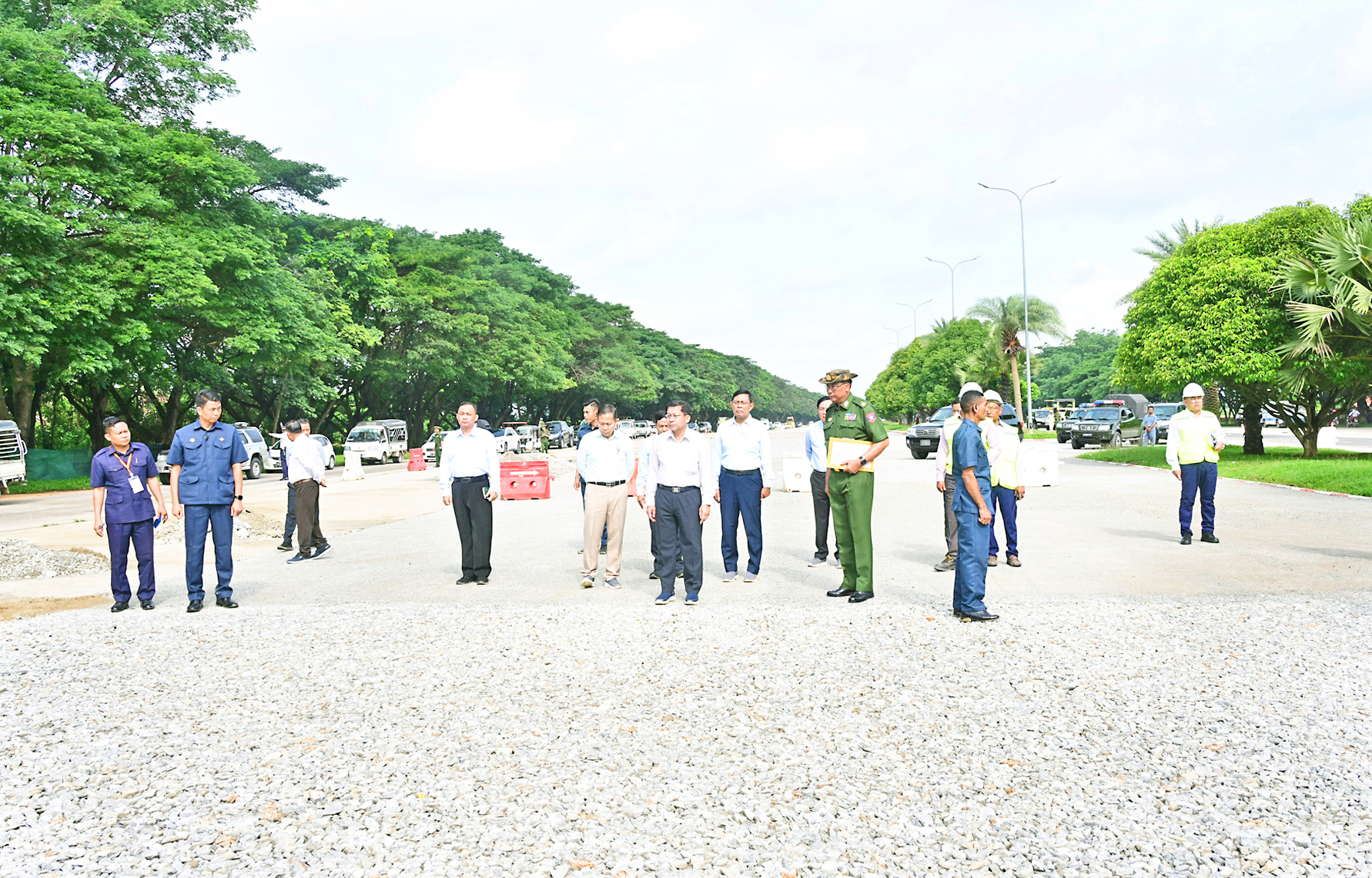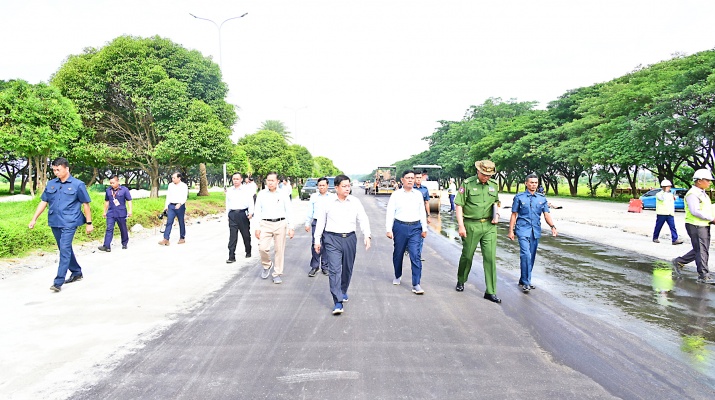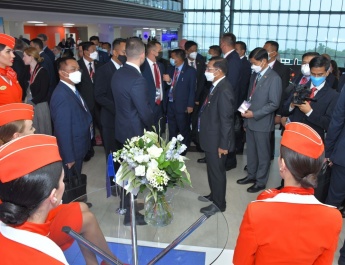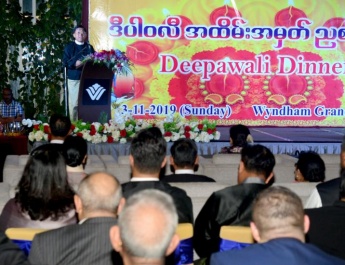NAY PYI TAW July 4
Senior General Min Aung Hlaing, Chairman of the State Administration Council Prime Minister, accompanied by SAC Vice Chairman Vice-SeniorGeneral Soe Win, Council Secretary General Aung Lin Dway, Joint Secretary General Ye Win Oo, the Union Minister for Construction, and relevant officials,inspected the ongoing upgrading and repair work on damaged sections of Yazahtarni Road in Nay Pyi Taw, caused by the Mandalay earthquake, this morning.
The repairs are being carried out using the advanced Regulating Course Mix Design technique.
During the inspection, Major General Zaw Naing Oo, Director of the Military Engineering Directorate under the Office of the Commander-in-Chief (Army), along with responsible officials, briefed the Senior General on the repair work being conducted on the concrete road from the Pan Khin Road traffic light intersection to the Kumudra Kyarban roundabout.
They explained the process of using machinery to lay asphalt on the damaged sections.
In response to the briefing, Senior General Min Aung Hlaing emphasized that the road repair work, utilizing the Regulating Course Mix Design technique, should ensure long-term durability and compliance with specified standards. He instructed that the road leveling process be systematic, ensuring uniformity and adequate compaction by operating rollers at the designated speed.
He also stressed the importance of achieving a smooth road surface, preventing water accumulation, and ensuring proper drainage, all in accordance with established technical standards.

Additionally he directed that the median and curved sections of the traffic islands be leveled properly, that the paving work be completed as quickly as possible, and that other necessary measures be implemented systematically.
Following the briefing, the Senior General and his team inspected the ongoing road repair work and provided further guidance on necessary actions.
The section of Yazahtarni Road from the Pan Khin Road traffic light intersection to the Kumudra Kyarban roundabout was severely damaged due to the Mandalay earthquake.
Shortly after the earthquake, the Senior General personally inspected the affected areas.
Following discussions with engineers, he directed that the road repairs be carried out using the Regulating Course Mix Design technique.
To implement this, the original nylon asphalt mix design was modified by reducing the asphalt and cement content, and a new design was tested.
Two sample molds were prepared at the Ministry of Construction’s Nylon Asphalt Laboratory and tested for stability and flow using a Marshall Testing Machine,successfully meeting the required standards.
The ongoing repairs on this road section are being conducted using the Regulating Course Mix Design technique.
Using this method for paving a road section 2 inches thick, 12 feet wide, and 5,280 feet (1 mile) long would save 18.44 tons (368 bags) of cement and 6.15 tons (33 barrels) of asphalt.





